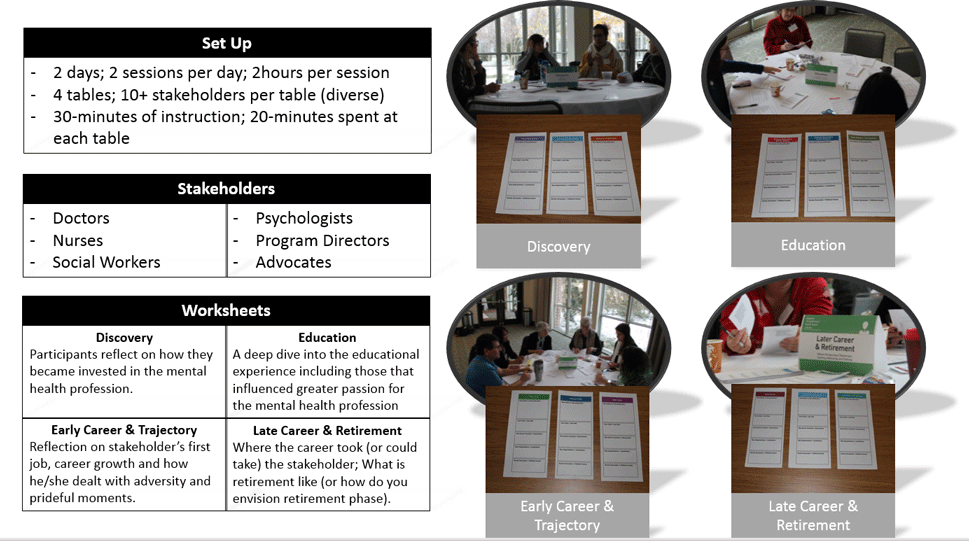Using design research to tackle mental health
According to the National Alliance on Mental Illness, one out of five adults and children experience some form of mental illness — that’s a staggering statistic. And it’s not lost on us that the issue of mental health rises to the top of our conversations whenever an act of violence is carried out on the public — in whatever form that takes.
Exacerbating the problem is an issue that seems almost counterintuitive — a shrinking mental health system. Fewer people are choosing to dedicate their careers to this cause. It’s estimated that the mental health industry needs 20,000 more professionals on the medical side and 50,000 more professionals on the therapy side to serve all who suffer. That’s a big gap — and a perplexing problem — given the rhetoric regarding the need to address the mental health issue with a sense of urgency. And, jobs in the mental health industry are important, well-paying jobs.
Why is This Happening and How Can the Industry Attract More Talent?
The Columbus Foundation hosted a series of brainstorm sessions with mental health stakeholders to find out how to make this profession more attractive. Mike Compton, assistant professor of CCAD’s Master of Design in Integrative Design, was tapped to facilitate design research methodologies to uncover where the barriers to a career in the mental health industry exist.

Stakeholder Organizations Included
Design Research Methodologies
Professor Compton employed participatory design and journey mapping as his methods for revealing where the barriers exist and to formulate strategies to address the challenge.
Participatory Design
An approach to design that actively involves all stakeholders ( employees, partners, customers, citizens, end users) in the design process to ensure the result meets their needs and is usable.
Journey Mapping
A visual or graphic interpretation of the overall story, from an individual's perspective, of their relationship with an organization, service, product, or brand over time and across channels.
Key to these productive sessions were three factors:
- Diversity
Having stakeholders from across the mental health industry — horizontally and vertically — in the room and working with one another on the exercises.
- Timing
Balancing the amount of time given to stakeholders as we navigated the journey. It was important to make sure there was sufficient time to flesh out each participant’s unique story, but not so much time that ideas and reflection became bland.
- Worksheets
Moving the participants through their unique journeys had to be comprehensive, thought-provoking, and emotional.
Following is a visual look at how the design research sessions were organized and facilitated.

What’s Next?
This is what we call a “wicked problem.” While research like this is a strong step in revealing why this career choice is met with a lack of enthusiasm, there’s a lot more to discover. Some next steps may include inserting ourselves into the mental health delivery system. Or perhaps meeting with people struggling with mental health to discuss their perceptions of caregivers. There’s also plenty of secondary (existing) research through the mental health community we can tap for insights.
One thing is certain, though: Participatory research and journey mapping certainly provided an insightful look into why people choose this career, where stress points exist, and how a person in this career reflects on life in the later stages of their career.